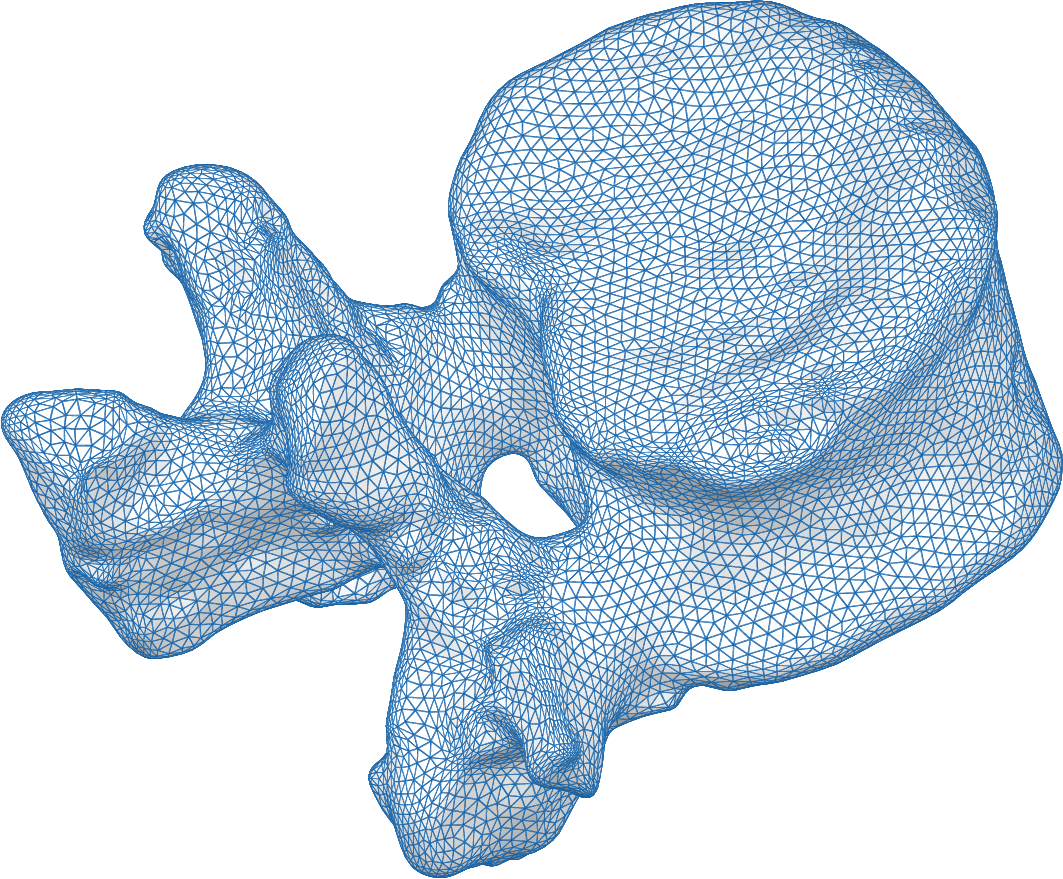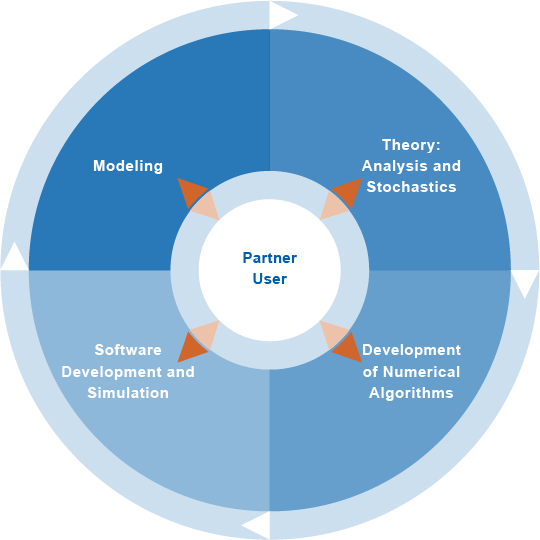Research

To get the most out of mathematics as an interdisciplinary field, WIAS examines its solving methods regularly and checks whether they have possibilities to use and adapt them. This leads to theoretical advances based on the mathematical fields of analysis, stochastics and numerical methods, as well as the combination of these fields. Furthermore, an important part of WIAS's work is fundamental application-motivated research. There is a wide and diverse range of applications, and it is common that theoretical results are applicable in more than one field.
From a mathematical point of view, the institute is divided into eight research groups that each have special strengths and work on cooperative problem-solving. If there is a current demand, due to certain problem areas and topics arising, additional temporary and short-term groups are set up in a flexible research platform.
Research at WIAS is organized in a matrix structure. The research groups as well as the mathematical research topics represent academic subjects. The main application areas, in which the institute has a special competence in the modeling, analysis, stochastic treatment, and simulation, together with the particular application oriented research topics are structured according to interdisciplinary fields of applications.
Due to the project-oriented working methods at WIAS, there is an important role for acquiring third-party funding from public funding programs and the private sector. This process is often achieved by working in collaboration with both scientific and industrial partners.



